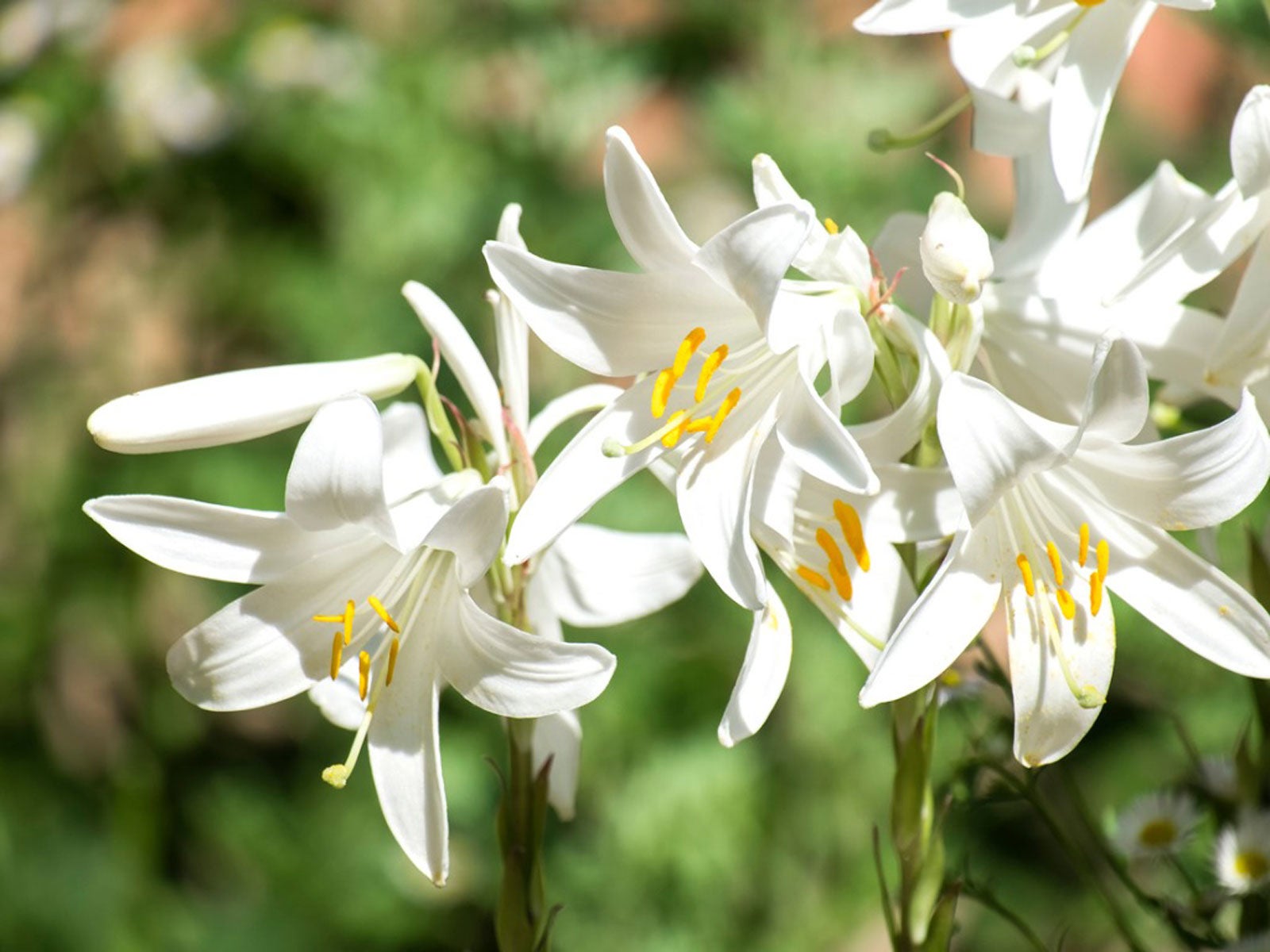Madonna Lily Flower: How To Care For Madonna Lily Bulbs


The Madonna lily flower is a striking, white bloom that grows from bulbs. The planting and care of these bulbs are a little different from other lilies though. Make sure you understand the particular needs of Madonna lilies so you can nurture a spectacular show of spring flowers next year.
Growing Madonna Lilies
Madonna lily (Lilium candidum) is one of the oldest cultivated varieties of lily. The stunning blooms on this plant are pure white, trumpet-shaped, and between 2 and 3 inches (5-7.5 cm.) long. The bright yellow pollen in the center of each flower contrasts strikingly with the white petals.
You’ll get lots of these pretty flowers too, as Madonna lily is known as a prolific bloomer. Expect up to 20 per stem. In addition to the visual display, these flowers emit a delightful fragrance.
Enjoy this lily in flower beds, rock gardens, or as a border. Since they smell so lovely, it’s nice to grow these flowers close to an outdoor seating area. They make great cut flowers for arrangements as well.
How to Care for Madonna Lily Bulbs
Madonna lily bulbs should be planted in early fall but require different handling compared to those of other lily varieties and species.
First, find a spot that will get full sun or partial shade. These lilies do especially well if they get some protection from the midday sun.
The soil should be close to neutral, so amend it with lime if your soil is too acidic. These flowers will also require a lot of nutrients, so add compost.
Gardening tips, videos, info and more delivered right to your inbox!
Sign up for the Gardening Know How newsletter today and receive a free copy of our e-book "How to Grow Delicious Tomatoes".
Plant the bulbs to a depth of just one inch (2.5 cm.), much shallower than you would plant other lily bulbs. Space them about 6 to 12 inches (15-30.5 cm.) apart.
Once they emerge in spring, Madonna lily care is not difficult. Just make sure you keep the soil moist without creating standing water or letting the roots get soggy. Once flowering is finished, by about midsummer, let the leaves turn yellow then cut them back.

Mary Ellen Ellis has been gardening for over 20 years. With degrees in Chemistry and Biology, Mary Ellen's specialties are flowers, native plants, and herbs.
-
 Looking For Plants To Give You The Soft And Fuzzies? Try These 5 Fuzzy Leaf Plant Options
Looking For Plants To Give You The Soft And Fuzzies? Try These 5 Fuzzy Leaf Plant OptionsLovers of texture, drama, silver foliage and tactile plants will adore these special sensory garden additions. These fuzzy leaf plant options will leave you all aglow
By Susan Albert
-
 Get Ready For A Summer Of Hummers! Grow These Full Sun Hummingbird Plants and Flowers
Get Ready For A Summer Of Hummers! Grow These Full Sun Hummingbird Plants and FlowersIf you’re lucky enough to enjoy a sunny backyard, make sure you are maxing out on your pollinator opportunities and grow these full sun hummingbird plants and flowers
By Tonya Barnett